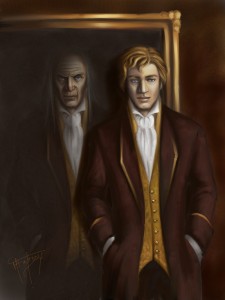|

THE BODY AS THE HIDDEN PICTURE OF DORIAN
GRAY
Dorian Gray's self-destruction was hidden in a portrait
in his attic. We do not have Dorian's luxury
of abusing a body image hidden in an attic,
while we walk in the world with an idealized fiction
of our self.
We carry around with us the evidence of our good decisions,
or of our own self-neglect, self-disrespect, self-ruin. Our body
is our portrait.
Most obviously and most importantly, our bodies
are evidence of how we eat. Everyone likes the taste
of good food. Unfortunately, our appetites far exceed our needs.
The pudgy jowl and flabby waist are
an announcement to others of the sheer numbers
unhealthy of taste treats we have indulged in.
Since taste is such a wholly personal, isolated,
self-governed (or ungoverned) pleasure, these marks
of self-deterioration in the interest of the passing joys of the
taste buds, are singularly regrettable.
Our carriage is a reflection of our attitude,
and the attention we give to our self-image.
Over-attended, the image may be arrogant.
Neglected, it may be slumpy, dragging; the world-weary hunched-shouldered
portrait of self-martyr;
or the stumbling shuffling picture of self-neglect.
Perhaps, worst of all, the body may become a nervous,
busy, running-about machine, moving too quickly
and too meaninglessly through the world to observe
its environment, its companions or itself.
Not all self-regard is bad:
it can lead to self-improvement.
1974-2012 DBM
Illustration: Mercuralis
Comments
Index
Website
Home |
